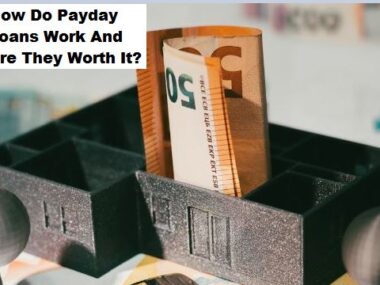Veterans Mortgage Loan: Buying a home is a big deal. For veterans, the VA loan makes it easier. This loan was made to thank them for their service. It helps with lower costs and better terms. But many still don’t fully understand how it works.
Some think it’s hard to qualify. Others think it’s only for certain types of homes. Many don’t know how much they can borrow or what income they need. This guide is here to clear all that up.
We’ll go over everything. From the 4 percent rule to income needs. If you’re a veteran or helping one buy a home, this post will give you the answers. It’s written in plain English, so you won’t need a degree in finance to get it. Let’s dive in.
Also, READ
What Is The 4% Rule On A VA Loan?
You may hear people talk about the “4 percent rule” when it comes to VA loans. This rule isn’t set in stone. But it’s often used by lenders to check if a borrower can handle the monthly payment. The idea is simple. Your mortgage payment should not be more than 4 percent of your yearly income.
Let’s break that down. Say you earn $100,000 a year. Four percent of that is $4,000. That means lenders might look to keep your monthly mortgage under $330. Sounds low, right? That’s because this rule is often used with other income rules, not alone. Some lenders use it as a quick filter. Others focus more on your total debt and leftover income each month.
So is this rule a hard stop? No. VA loans have no set debt-to-income limit. But lenders still want to make sure you’re not stretched too thin. They may use this rule to flag cases that need a closer look. The real goal is to make sure you’re not signing up for a loan you can’t afford. It’s not about saying “no,” it’s about making sure the “yes” is safe.
Do Veterans Get Special Mortgage Rates?
Yes, veterans often get better mortgage rates. This is one of the biggest perks of a VA loan. These loans are backed by the government. That means less risk for the lender. And less risk means better rates for you.
Lenders love safety. When the VA steps in and says, “We got your back,” lenders relax. They pass that comfort on to the borrower by offering lower interest rates. On average, VA loan rates are about 0.25 to 0.5 percent lower than regular loans. That can save you thousands over the life of your loan.
But that’s not the only break veterans get. VA loans don’t need a down payment. They also don’t charge monthly mortgage insurance. That combo is rare in the loan world. A lower rate, no money down, and no mortgage insurance? That’s a win on all sides. If you qualify for a VA loan, you’re already ahead of the game.
Is It Hard To Get A VA Mortgage Loan?
No, it’s not hard if you meet the basic rules. The VA loan is one of the easier loans to get if you’re eligible. The credit score requirement is lower than for most other loans. Some lenders work with scores as low as 580. That’s huge for people who’ve had money issues in the past.
Another plus? You don’t need to put any money down. For most loans, this is the hardest part. Saving for a 20 percent down payment on a $300,000 house means coming up with $60,000. With a VA loan, you can skip that. That opens the door for more veterans and their families to buy sooner.
But there are still rules. You need to show steady income. You also need to get a Certificate of Eligibility (COE) from the VA. It proves your service record. Lenders will also check your debt-to-income ratio. They want to see that you can cover the payment plus other bills. It’s not a free-for-all. But if you’ve served, and you meet these basic steps, the VA loan is one of the most flexible options out there.
How Much Do I Need To Make To Buy A $400K House With VA Loan?

Let’s get real. If you want a $400,000 house, how much money do you need to bring in each year? It depends on a few things, but here’s a ballpark answer: around $80,000 to $90,000 a year. That gives you enough income to cover your mortgage, property taxes, insurance, and other debts.
Now, how does that break down? A $400,000 loan with a 30-year term at a 6 percent interest rate comes out to about $2,400 a month. Add in property taxes, insurance, and maybe HOA fees, and you’re closer to $3,000 a month. Lenders usually want your total monthly debts to be no more than 41 percent of your gross monthly income.
That’s why $80,000 to $90,000 a year is a safe number. Of course, if you have zero debt, you might qualify with a bit less. If you’ve got a car loan and student loans, you may need more income to balance it out. Either way, a steady paycheck and clean credit history go a long way in helping you qualify.
How Much Income Is Needed For A $500,000 Mortgage?
A $500,000 mortgage is no joke. If you want to take on that kind of loan, you’ll likely need to make about $100,000 to $110,000 a year. That keeps you in the comfort zone most lenders look for. It gives you room to pay your mortgage and still handle life’s other costs.
Let’s do the math. A $500,000 loan at 6 percent interest over 30 years is around $3,000 a month. Add $700 to $1,000 for property taxes and insurance. You’re now looking at about $4,000 a month in total costs. Lenders don’t want that to eat up too much of your paycheck. Most use the 41 percent rule again. That’s why $100,000 a year is a good minimum to shoot for.
If you’ve got a spouse with income, that helps. So does having little to no debt. But if you’re going solo and have a car loan, credit cards, or student loans, those count against your monthly total. Keep that in mind when aiming for a home in the $500,000 range. You don’t have to be rich, but you do need to be stable.
How Much Will A VA Loan Approve Me For?
There’s no hard limit on how much a VA loan can give you. The VA doesn’t cap the loan amount. Instead, it backs a part of the loan, which gives lenders the green light. That said, the real limit depends on your income, debt, and credit score.
Lenders use a few tools to decide how much you can borrow. First, they look at your debt-to-income ratio. That’s your monthly bills compared to your monthly income. They like to see this under 41 percent. Second, they use “residual income” rules. This means you need a certain amount left over after all bills are paid each month. This number depends on your family size and where you live.
Let’s say you make $90,000 a year and have no other debts. You may get approved for up to $400,000 or more. But if you’ve got loans and credit card bills, that max loan amount drops. The best way to find out is to talk to a VA-approved lender. They’ll look at your full picture and give you a number. And remember, just because you can borrow a certain amount doesn’t mean you should. Always borrow what you can afford, not the max on paper.
Conclusion
Veterans Mortgage Loan: The VA loan is one of the best tools for veterans who want to buy a home. It rewards your service with benefits no other loan offers. You don’t need a down payment. You don’t pay private mortgage insurance. And the rates are often lower than any other loan type.
Still, you need to know the basics. Understand how your income affects what you can afford. Know what rules lenders follow. Learn how things like the 4 percent rule or debt-to-income ratios come into play. These details help you plan smart and avoid surprises.
If you’ve served and are ready to buy, the VA loan can get you there. Just make sure you work with a lender who knows the VA system inside and out. That way, you get all the perks you’ve earned. Buying a home is a big step. But with the right help and the right loan, it’s one you can take with confidence.






